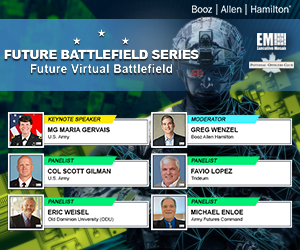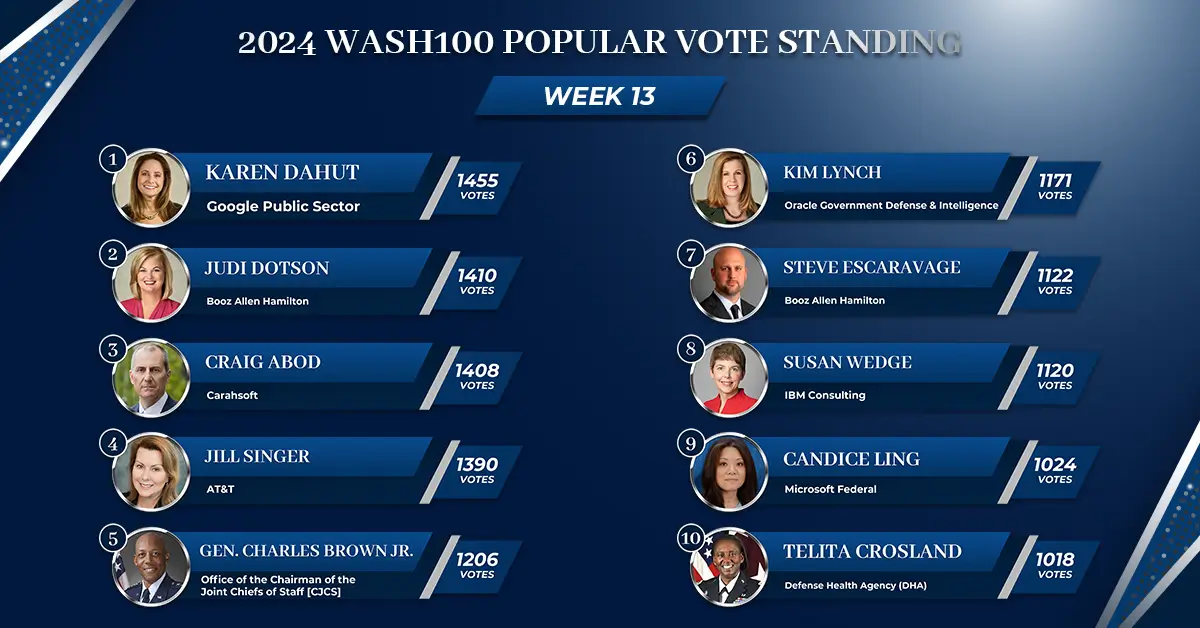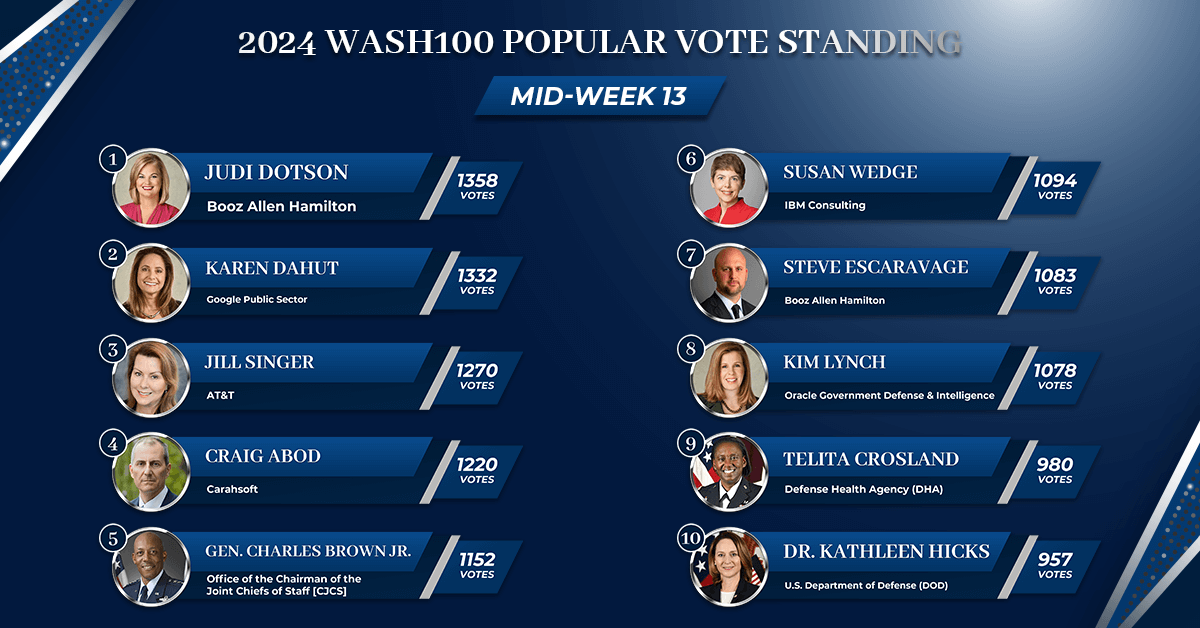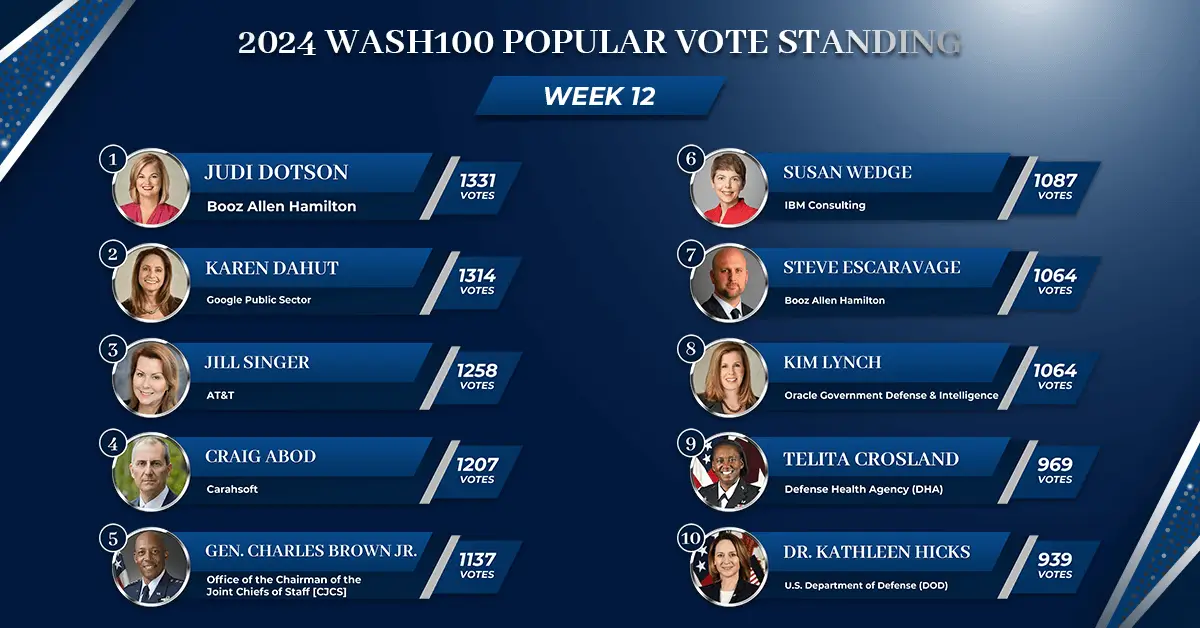Potomac Officers Club hosted its Future Battlefield Virtual Event on Wednesday, July 22nd to discuss how defense has shifted with the integration of emerging technologies. The event featured an expert panel to further discuss the priorities and challenges of modern warfare.
The panel hosted experts from the private sector, featuring Scott Gilman, deputy director of the U.S. Army Modeling and Simulation Office (AMSO); and Michael Enloe, Army Government Civilian chief technical officer for the Synthetic Training Environment (STE) Cross Functional Team (CFT) with Army Futures Command.
From the public sector, the panel featured Eric Weisel with Virginia Modeling, Analysis & Simulation Center at Old Dominion University (ODU); and Favio Lopez, chief operations officer with Trideum. Greg Wenzel, executive vice president with Booz Allen Hamilton and 2020 Wash100 Award recipient moderated the panel discussion.
If you missed the virtual event, you can still register to watch the footage in Potomac Officers Club’s Event Archive.
Panelist: Michael Enloe

Enloe introduced himself and STE by discussing the capabilities his division will be working on moving forward. He stated that STE will look at design boxes for its scalability architecture and defined the STE entity.
“An entity is a system object on the computing capability that has the ability to pathfind from one point to another. It also has collision detection capabilities and is able to find the shortest route from point A to point B, as well as mission commands a status report,” Enloe defined.
As STE continues to advance its entities, the division will investigate new capabilities to integrate CPU resources to complete advanced missions. He addressed the industry partners, stating that their partnerships are vital to “scale up” its technologies. For larger battalion orders, Enloe stated that it would introduce different challenges to both soldiers and maintenance.
“These are the hard challenges that we face, and where we need industry’s help. We have to get to the behaviors that are higher than squad level. One of the resources that we’ve put together is a list of the top five things that we need to see industry work on that are hard problems that we look for the industry to solve,” Enloe stated.
Panelist: Eric Weisel

Weisel began his discussion with a description of Industry 4.0. He stated that the model was conceptualized in the manufacturing sector to apply modeling and simulation, data analytics, augmented and virtual reality to manufacturing processes.
“We’re now seeing integration of Industry 4.0 into other processes. At VMSAC, we’re now integrating technologies into simulations and training. Academia can weigh into the virtual training environment in two areas: research and workforce,” Weisel said.
He discussed that universities will produce both broad and applied research to continue investigation of specified topics, but the primary goal of a university is to train the future workforce.
Weisel stated that two and four year degrees should invest in Industry 4.0 to grow the workforce because the technologies become more common across a variety of defense applications.
“Specifically, we have to produce graduates that meet industry’s needs. One of the areas we’ve been engaged in recently is the CMSP program. These certification programs are supported by the government and industry as a contract labor category.” Weisel added.
Panelist: Favio Lopez

Over the last 15 years, Trideum has supported multiple agencies across the U.S. Army and Department of Defense (DoD), including the design, development and execution of testing and training as well as operational support.
“We not only understand the operational and environmental needs, but we also have technical experts that are able to solve both the operational and technical customer needs. We’ve created a solution that integrates the design and development approaches,” Lopez said.
Lopez discussed how SIMNET allowed both the public and private sectors to understand what was in the realm of the possible within technology and development. Distributive Interactive Simulations (DIS) laid the foundation for what is happening now.
“The talk of 5G will hopefully give us the connectivity we need to enhance our capabilities to advance our potential. Everyday technology is changing and adapting as the commercial needs and the DoD are leveraging those investments,” Lopez added.
He noted that not only has virtual battlefield technologies shifted, but so has weapons technology. There has been exponential improvements in kinetic and non kinetic weapon systems. Unmanned systems and electronic warfare have created complexities that are not completely understood.
“What has not changed is that we need to plan, prepare, execute and change. Virtual battlefield requires us to not just look at it as an operational training space, but also consider it in terms of adaptation in our battlespace and experimentation,” Lopez concluded.
Panelist: Col. Scott Gilman

Gilman’s office addresses challenges with training, simulations and analysis. He began his discussion by addressing greater communities. The communities span across commands and across the U.S. Army.
“The virtual battlefield spans across all divisions and communities within the Army. At the core of these organizations are people. As we look toward the virtual battlefield we have to look back toward the soldiers and their leaders to bring solutions to the point of need,” Gilman said.
The organization requirement has leveraged a delicate environment; however, he stated that in order to create a usable solution, there has to be a rugged technology that does not have to be handled delicately. Another requirement is that the future systems have to be able to quickly update platforms. The industry is needed to help streamline these requirements to enable soldiers to train as they prepare to fight.
“Common standards, common terrain and open architecture is capitalized on to build a solution across those same threads. We have to provide our soldiers the best training capabilities possible to enable them to go fight and win our nation’s wars and return for another day,” Gilman concluded.
In case you missed the event, click here to replay Potomac Officers Club’s Future Virtual Battlefield Event.
Mark your calendars for Potomac Officers Club’s 5th Annual Army Forum on Thursday August 6th. Bruce Jette, assistant secretary of the Army for Acquisition, Logistics, and Technology (ASA(ALT)) and 2020 Wash100 Award recipient, will serve as the keynote speaker at the forum.
During the 5th Annual Army Forum, Jette will discuss the progress, innovations and accomplishments of the Army’s modernization renaissance over the last year, what challenges remain, and how industry can help in 2021 and beyond.
Register here to join Potomac Officers Club for the 5th Annual Army Forum on Thursday, Aug. 6th to learn more about the latest initiatives and modernization plans for the U.S. Army.







